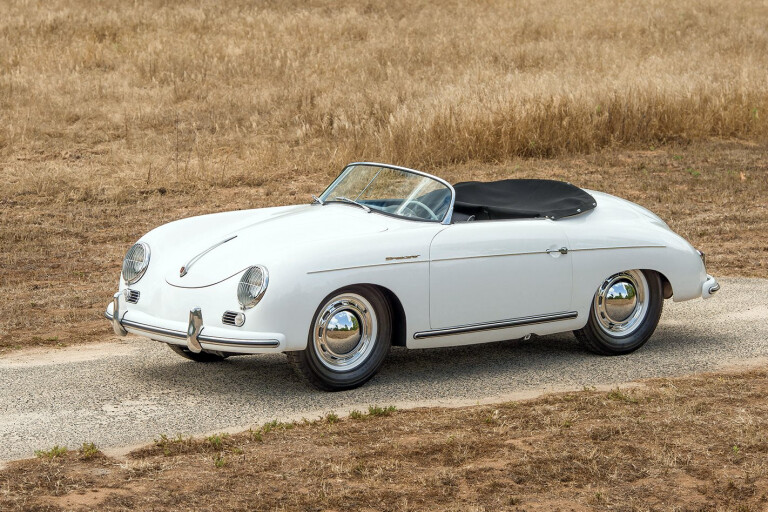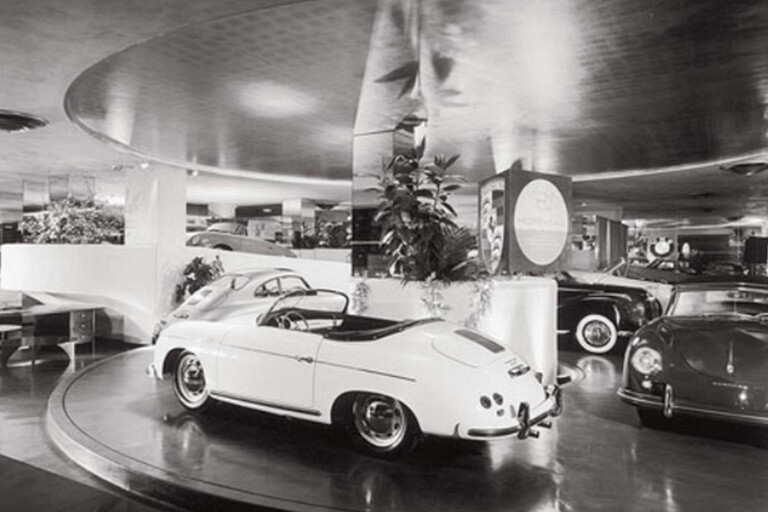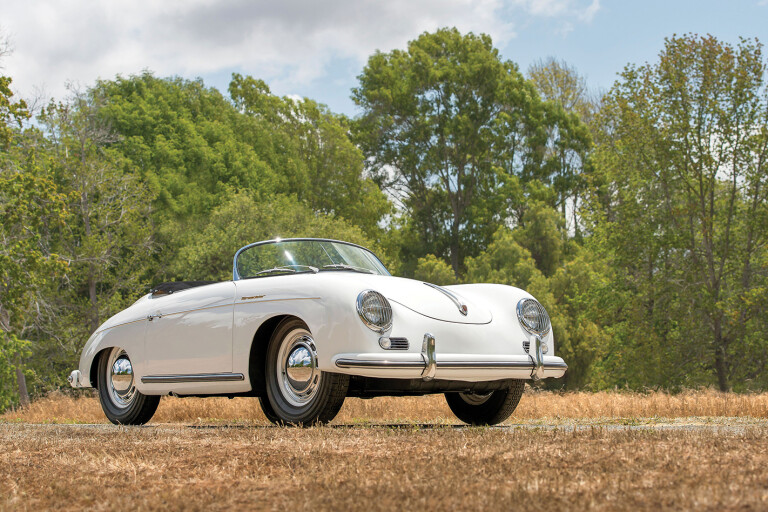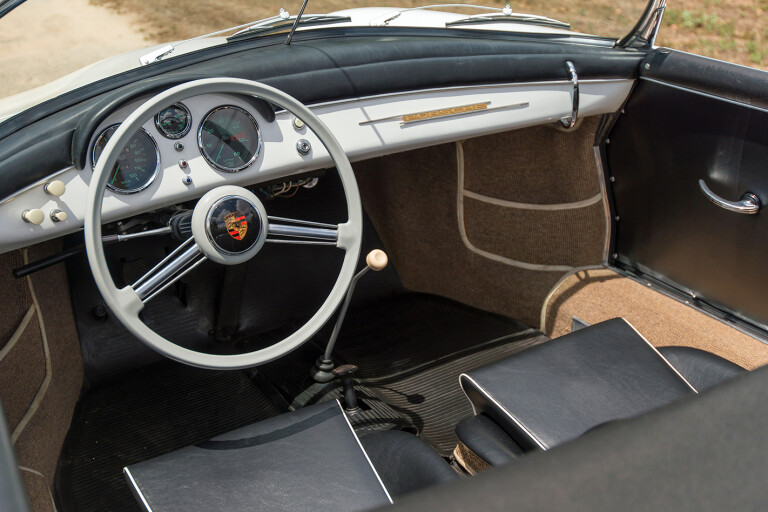
FERRY Porsche built his first sports car in 1948. The little silver roadster was based on lightly modified Volkswagen mechanicals, but its tubular spaceframe had the engine and rear suspension turned 180 degrees, making it mid-engined. Even as this ‘Type 356’ was being developed, however, Porsche was designing a more production-viable coupe, with a sheet-steel chassis retaining the VW’s original rear-engine placement.

Very quickly, the production 356’s fitness for racing and rallies crossed the Atlantic. In 1950, with the US post-war market booming for European sports cars like the Jaguar XK120, Porsche’s new US agent, Austrian-born Max Hoffman, proposed a more affordable, stripped-out roadster version.
Ah, reader – not so fast. This car, the Type 540 (or America Roadster) appeared in 1951. Proving too heavy in steel, Porsche outsourced production in aluminium. It proved spectacularly expensive (at US$4600 in 1951) and just 17 were produced.
By 1954 – Porsche built only its 5000th car in March of that year – Hoffman’s US market alone was accounting for around 30 percent of Porsche production. (In total, 75 percent of annual production was for export markets including, since 1951, Australia.)

The 356 coupes and cabrios were still expensive, however (US$4284 for a Super coupe, $4584 for a cabrio), prompting stripped-out American versions of each (US$3445/$3695). However, weekend racer rivals like the Triumph TR2, Austin-Healey 100 and the new Chevrolet Corvette, reignited the roadster idea – with Hoffman setting the bar at US$3000.
The resultant 356 Speedster made its debut in September 1954, priced at US$2995 (before ‘mandatory options’). Based on the 356 Cabriolet, but with revised rear bodywork, it featured a cut-down windscreen, slot-in side curtains and a low, basic soft-top that reduced overall height by 80mm (to 1220mm), making headroom a joke.
However, with its 760kg kerb weight, agile handling and strong drum brakes, the Speedster was quick to make its mark on the US sports car racing scene.
Porsche built 1234 ‘pre-A’ Speedsters (pictured) before the heavily revised A-series replaced it in October 1955. Also released to other markets, the 356A Speedster introduced 45kW 1600 and 56kW 1600 S engines, along with significant suspension and gearbox upgrades and 15-inch wheels.

Ironically, Americans also killed the Speedster (with a total of around 4500 built), with demand for more comfort prompting its replacement in August 1958 by the 356 Convertible D.
Cutting the cab line
The Speedster was developed from the production 356 Cabriolet’s fabricated monocoque, with suspension by (VW-sourced) transverse torsion bars with
trailing links at the front and a similar, elongated set-up with swing axles at the rear. Wheels were 16 x 3.5-inch. The racer-removable windscreen and simple soft-top allowed a lighter internal structure; longer rear bodywork extended to shorter doors. Glasspar (US) offered a factory-approved fibreglass hardtop from 1955.
Pulling up its dak-daks

Base ‘pre-A’ Speedsters got the air-cooled, pushrod ohv (1488cc) 1500 flat four, producing 41kW, while an extra $500 bought the 1500 S, with larger (40mm vs 32mm) twin Solex carbs, making 52kW at 5000rpm. Four-speed all-synchro box had shorter 3rd and 4th ratios, making for 0-100km/h in 10 seconds (1500 S). October 1955 brought a substantially new 356A Speedster, with 1.6-litre engines.
Spartan warrior

Not a lot to report on the interior; that was the point. The flat dash officially had only a speedo and temp gauge – with a $15 ‘mandatory option’ tacho and heater. Seats were lightweight, one-piece buckets. Floor-hinged pedals, gawky gearlever and dak-dak exhaust note kept the vibe very Volkswageny. The pre-A series cars, distinguished by quad ‘beehive’ tail lights (A-series had teardrop tail lights), only had three exterior colours: white, red and blue.

COMMENTS